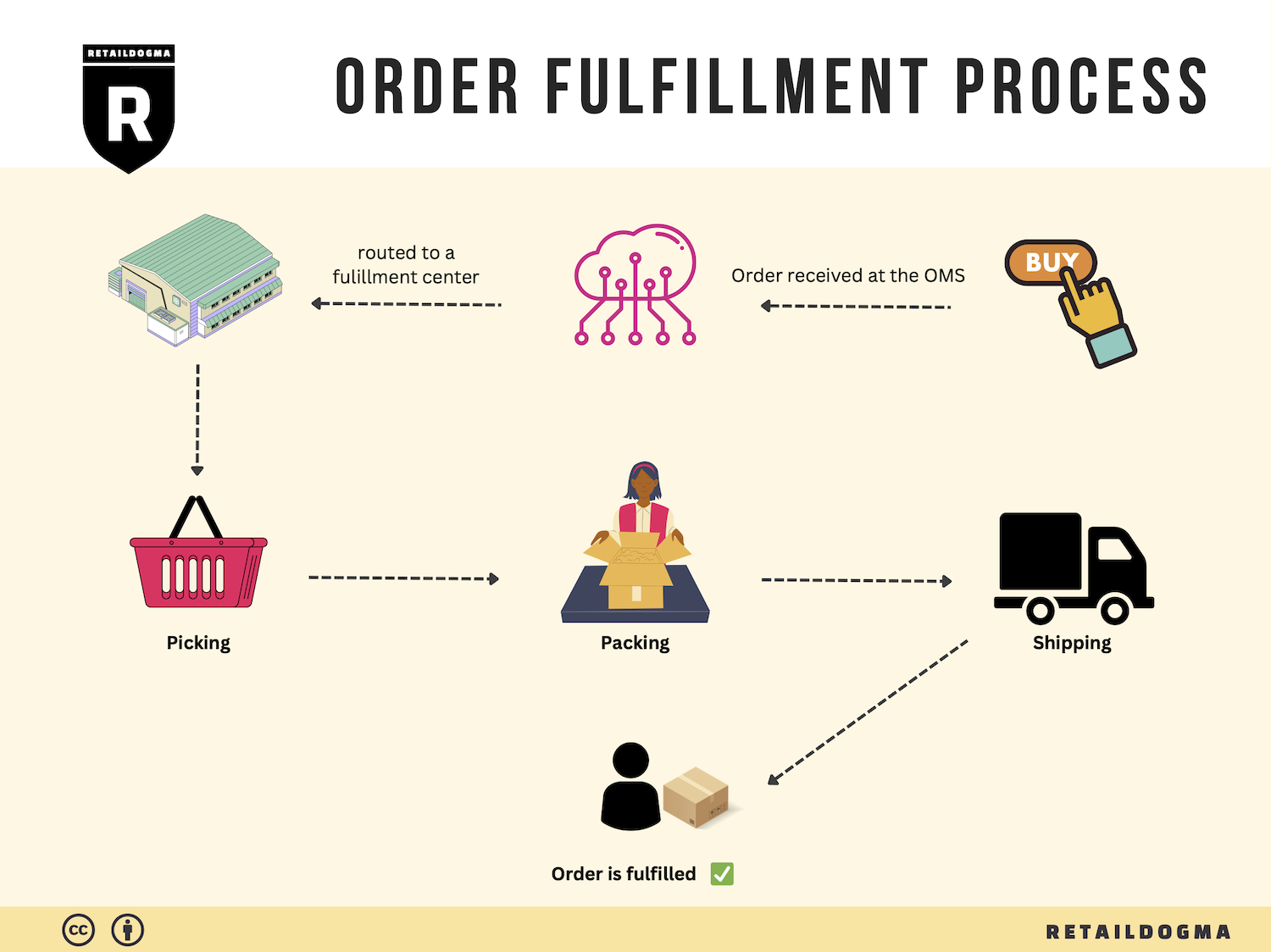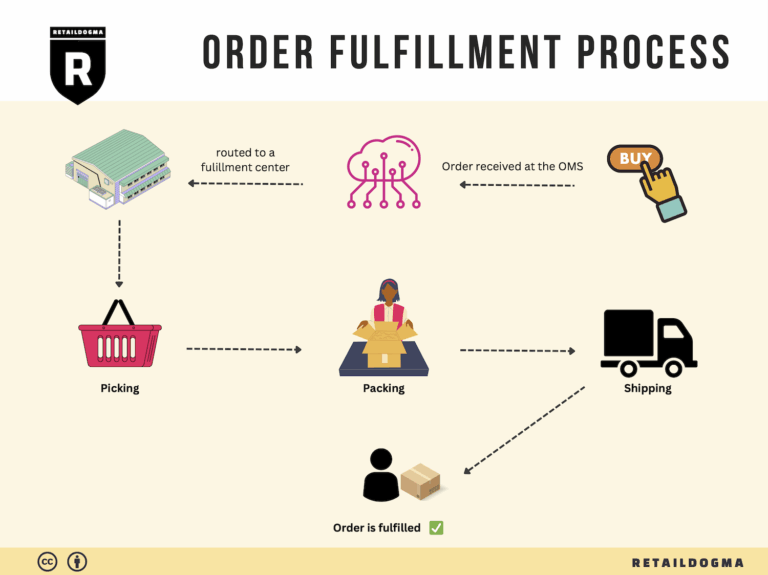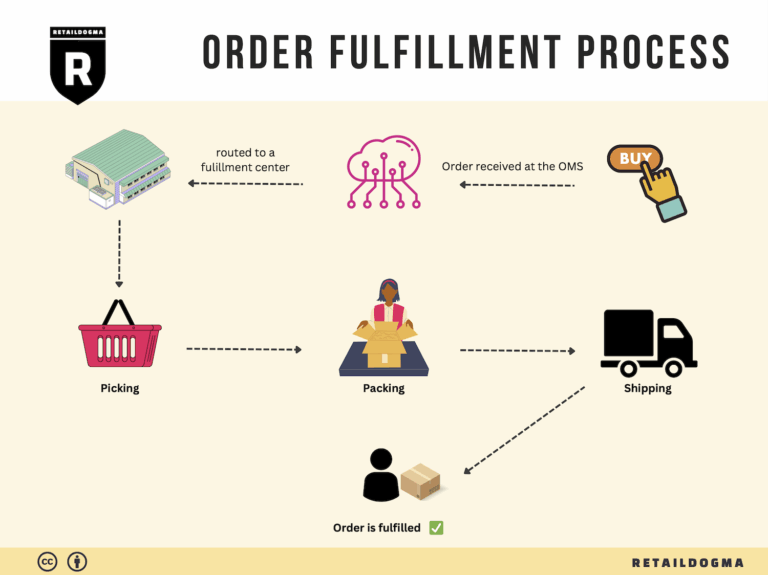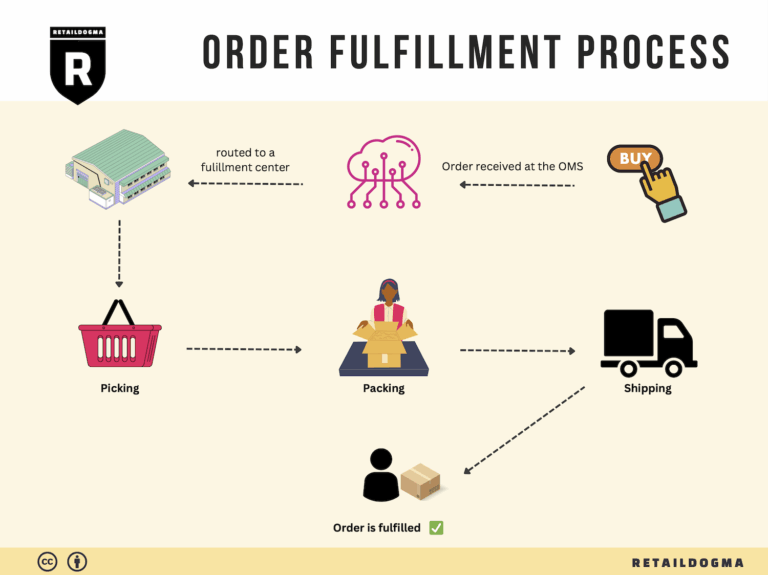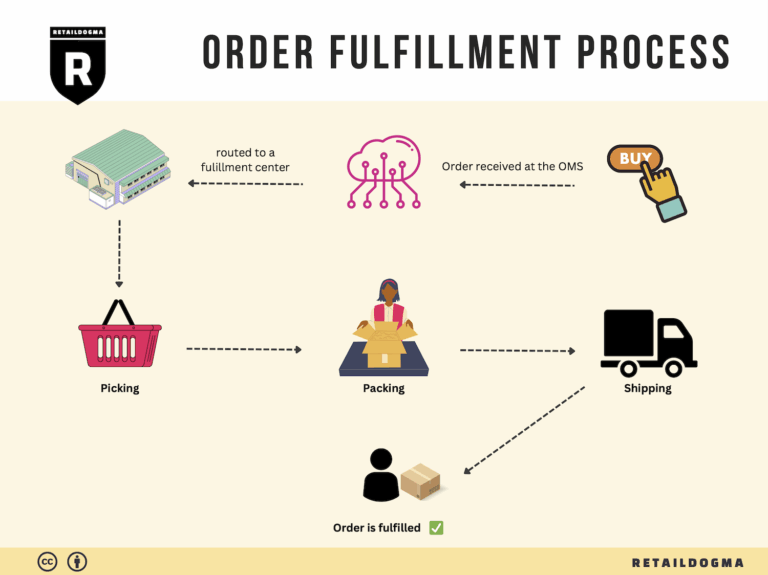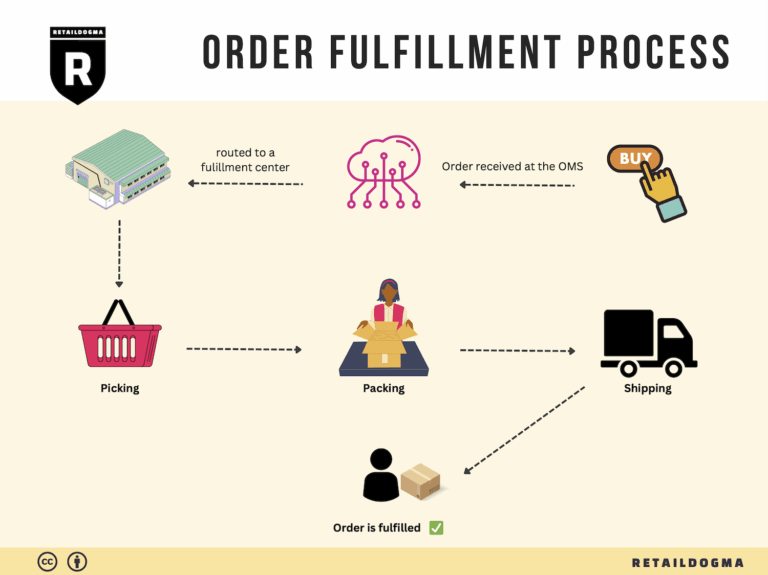How Order Fulfillment Works: A Step-by-Step Guide for Businesses
What is E-commerce Fulfillment? An Introduction for Growing Businesses
Understanding E-commerce Fulfillment
As an e-commerce business owner, you may find yourself grappling with the complexities of packing and shipping orders, especially as your sales begin to grow. This overwhelming process can drain valuable time and resources, diverting your focus from strategic growth initiatives. Fortunately, e-commerce fulfillment offers a streamlined solution to this common pain point, enabling you to efficiently deliver products to your customers and enhance their shopping experience.
At its core, e-commerce fulfillment is the comprehensive process of getting a product from your inventory to your customer’s doorstep. This involves several critical steps, including receiving orders, managing inventory, picking and packing items, and coordinating shipping logistics. For businesses scaling up, understanding the nuances of fulfillment can be a game-changer.
This guide will delve into the various fulfillment models available to growing e-commerce businesses. We will explore options such as third-party logistics (3PL) and Fulfillment by Amazon (FBA), which allow you to leverage external expertise and resources. Each model has unique advantages and can be tailored to fit your specific operational needs.
In addition to discussing fulfillment models, we will outline the core services that fulfillment partners typically offer. These may include inventory management, order tracking, returns processing, and even customer service support. Understanding these services will help you assess what you need from a fulfillment partner and how they can best support your business objectives.
Choosing the right fulfillment partner is crucial for maintaining efficiency and customer satisfaction as you scale. This guide will provide you with practical criteria to evaluate potential partners, including their geographic reach, technology integration, and pricing structures.
Finally, we will touch on pricing considerations, helping you understand how to budget for fulfillment services while ensuring that you maintain healthy profit margins.
Our goal with this guide is to empower you with the knowledge and tools necessary to make informed decisions about your logistics. With the right fulfillment strategy in place, you can focus on growing your business while ensuring your customers receive their orders quickly and accurately. Let’s dive into the world of e-commerce fulfillment and discover how it can transform your operations.
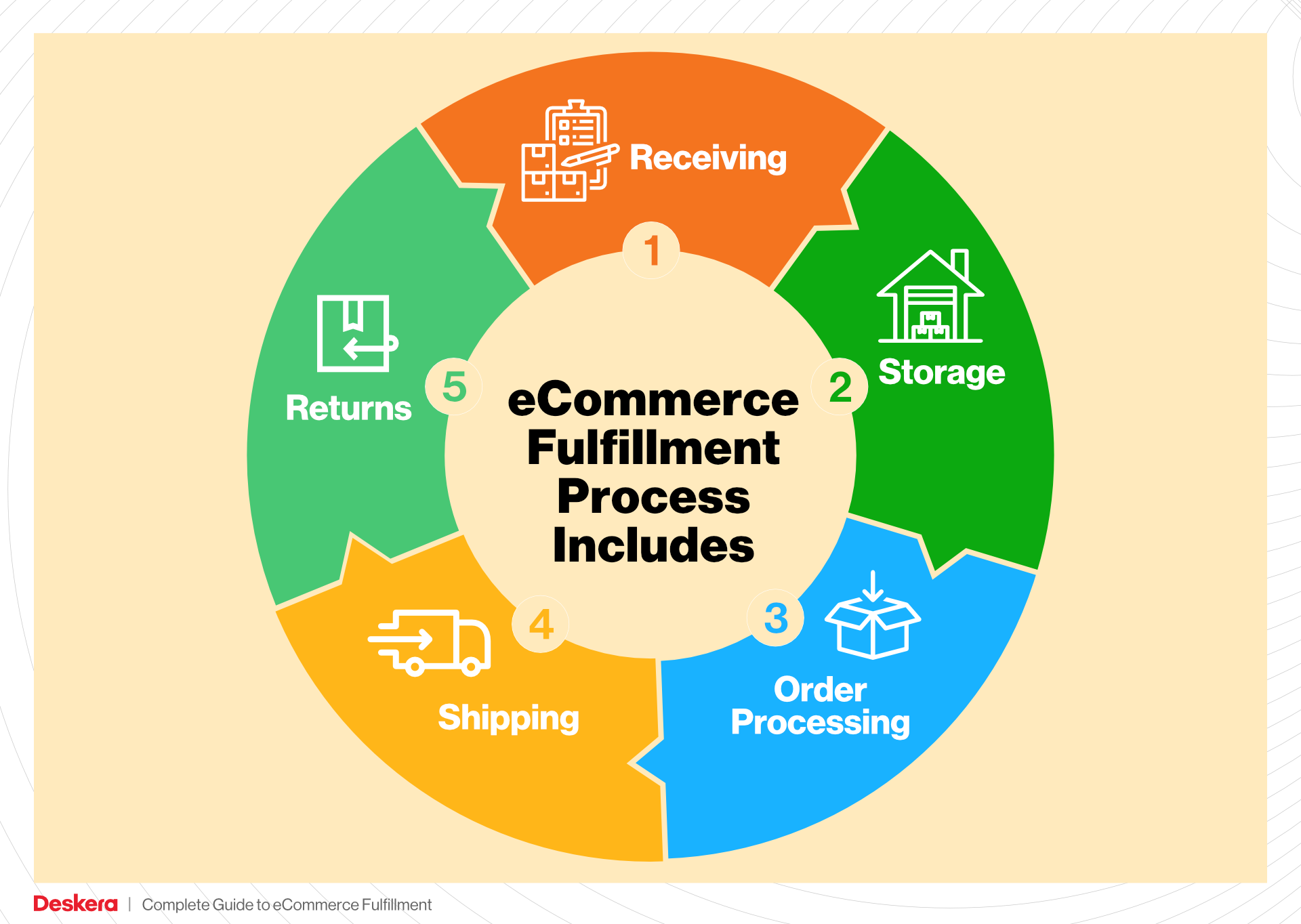
What You’ll Learn In This Guide
- What is E-commerce Fulfillment? An Introduction for Growing Businesses
- The Order Fulfillment Process: From ‘Buy’ Button to Customer’s Door
- Comparing Fulfillment Models: In-House vs. 3PL vs. Dropshipping
- A Deep Dive into Amazon FBA: Pros, Cons, and Who It’s For
- Core Services Offered by Fulfillment Centers
- How to Choose a Fulfillment Partner: A 6-Point Checklist
- Understanding Fulfillment Pricing: A Breakdown of Common Fees
- Frequently Asked Questions (FAQs) about Fulfillment
- Conclusion: Is Outsourcing Fulfillment the Right Move for Your Business?
- Important Disclaimer
The Order Fulfillment Process: From ‘Buy’ Button to Customer’s Door
1. Receiving Inventory
The order fulfillment process begins with receiving inventory, where products are delivered to the fulfillment center from manufacturers or suppliers. This stage is crucial for establishing a reliable inventory base, as it sets the tone for all subsequent steps in the fulfillment process.
Upon arrival, products are unloaded and inspected for damage or discrepancies against purchase orders. This is where the concept of SKU (Stock Keeping Unit) comes into play. Each product is assigned a unique SKU to facilitate tracking and inventory management. Accurate receiving ensures that stock levels are correctly updated in the system, which is essential for maintaining inventory accuracy and preventing stockouts or overstock situations.
Effective inventory receiving processes reduce errors and ensure that the right products are available for order fulfillment. By leveraging technology, such as barcode scanning, businesses can streamline this step, enhancing efficiency and accuracy.
2. Warehouse Storage
Once the inventory has been received, it is stored in the fulfillment center. Proper warehouse storage is vital for maximizing space utilization and ensuring quick access to products. In this stage, items are organized systematically, often based on a warehouse management system (WMS), which helps in tracking inventory locations and movement.
Effective storage strategies include categorizing products by size, type, or demand frequency. High-demand items might be placed closer to the packing area to facilitate quicker access. This organization not only speeds up the picking process but also minimizes the time spent searching for products.
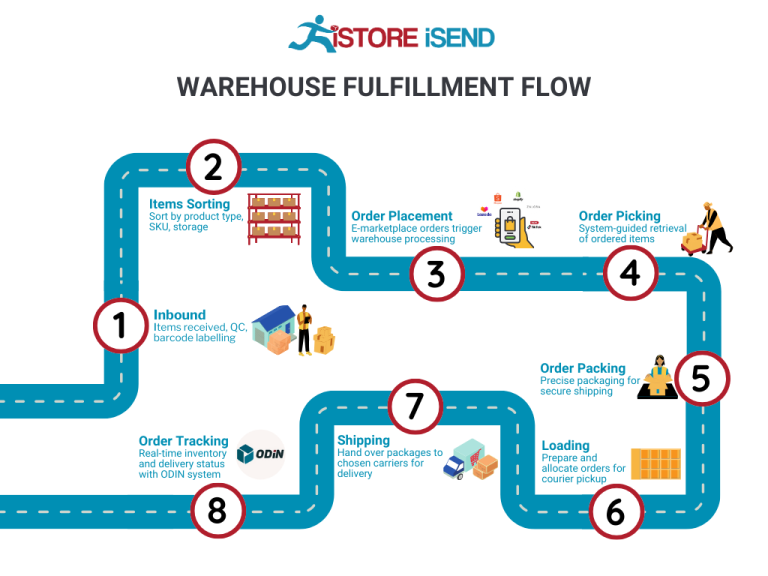
Efficient warehouse storage directly impacts the overall fulfillment speed. Businesses that optimize storage can significantly reduce their order turnaround times, leading to improved customer satisfaction and retention.
3. Order Picking
Once a customer places an order, the next step is order picking, where the required products are retrieved from the warehouse. This is a critical step in the fulfillment process because the accuracy and speed of picking can significantly affect delivery times and customer satisfaction.
During order picking, pick lists are generated, detailing the items and quantities needed for each order. Employees or automated systems then use these lists to locate and collect the products. There are various picking methods, such as single-order picking, batch picking, or zone picking, each suited to different business scales and order volumes.
Efficient picking processes can reduce the time it takes to fulfill an order. By employing strategies such as optimizing pick paths and using technology like mobile scanners, businesses can enhance productivity and accuracy in this step.
4. Order Packing
After products have been picked, they move to the packing stage. Packing is essential not only for protecting items during transit but also for ensuring that they are presented well to customers. Proper packing minimizes damages and returns, which can be costly for businesses.
During this phase, packers gather the picked items and use appropriate packaging materials. This is where the concept of packaging optimization comes into play. Businesses should choose packaging that fits the product dimensions closely, reducing shipping costs while ensuring safety.
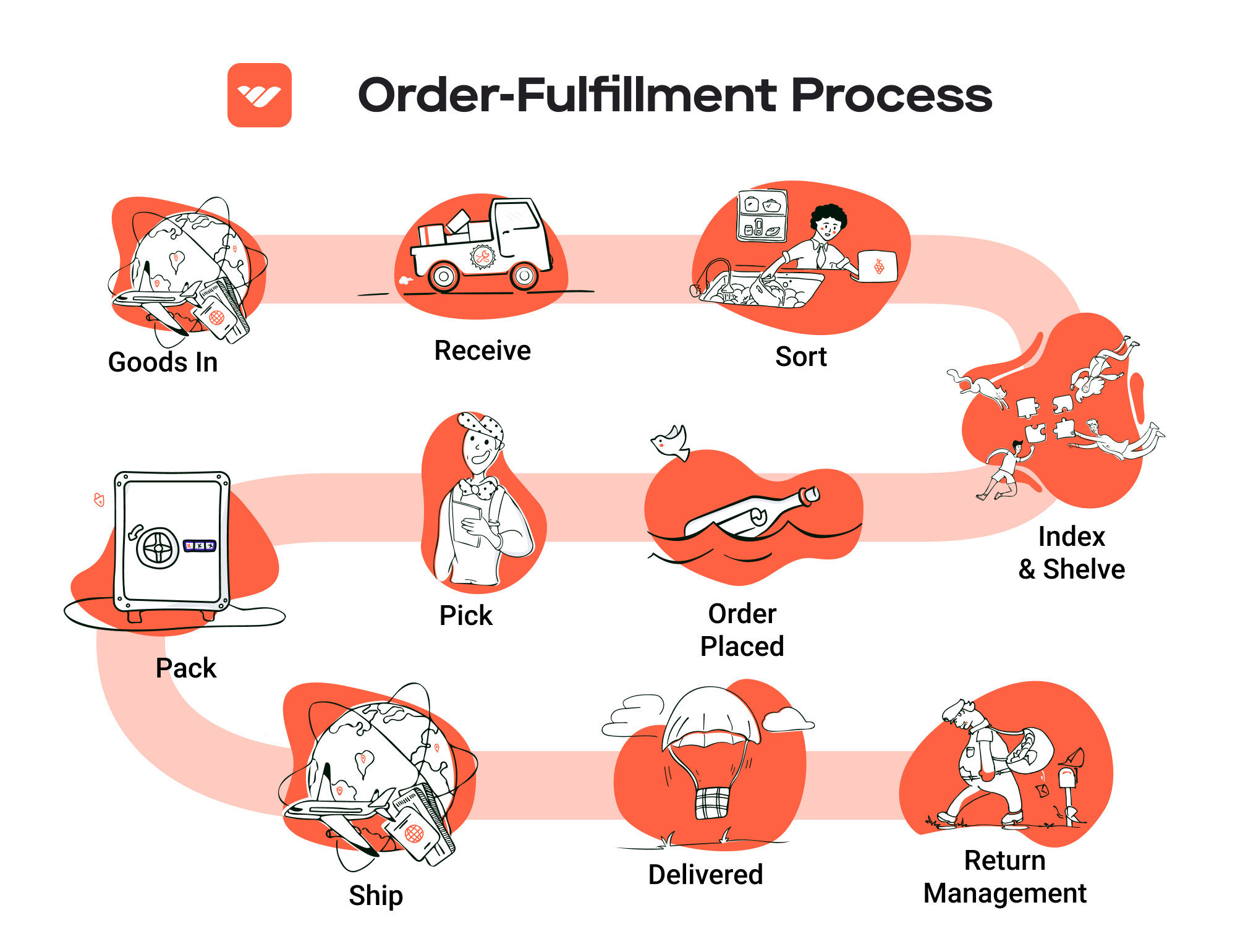
Additionally, including packing slips, promotional materials, or return instructions can enhance the customer experience. A well-packed order reflects professionalism and care, contributing to customer loyalty and positive reviews.
5. Shipping & Delivery
The final step in the order fulfillment process is shipping and delivery. This stage involves selecting the right carrier and shipping method to ensure timely delivery to the customer’s doorstep. Choosing the appropriate carrier is crucial, as it can significantly impact delivery speed and cost.
In this step, businesses often utilize shipping software to compare rates, print labels, and track shipments. Providing customers with tracking information enhances transparency and allows them to monitor their order status.
Timely delivery is a cornerstone of excellent customer service in e-commerce. By optimizing shipping routes and leveraging fulfillment partners with strategic locations, businesses can reduce shipping times and costs, leading to greater customer satisfaction and repeat purchases.
Conclusion
Understanding and optimizing each step of the order fulfillment process—from receiving inventory to shipping and delivery—can have a profound impact on an e-commerce business’s efficiency and customer satisfaction. By implementing best practices and utilizing technology at each stage, businesses can scale their operations effectively while maintaining high service levels.
Comparing Fulfillment Models: In-House vs. 3PL vs. Dropshipping
Comparison of Fulfillment Models
| Model | Who Handles Inventory | Best For (Business Stage) | Key Advantage | Key Disadvantage |
|---|---|---|---|---|
| In-House Fulfillment | The business itself | Startups, small businesses | Full control over inventory and processes | High overhead costs and resource demands |
| Third-Party Logistics (3PL) | A third-party fulfillment provider | Growing businesses, scaling brands | Cost-effective, scalable, and efficient | Less control over the fulfillment process |
| Dropshipping | Supplier or manufacturer | New businesses, niche markets | Low upfront investment and risk | Limited control over inventory and shipping times |
In-House Fulfillment
In-house fulfillment involves managing all aspects of the order fulfillment process within the business itself. This model is often favored by startups and small businesses that have unique products or specific shipping needs. By keeping fulfillment operations internal, businesses maintain complete control over their inventory, packaging, and shipping processes. This can lead to a more personalized customer experience, as companies can ensure that orders are handled precisely according to their standards. However, the in-house model comes with significant challenges. It requires investment in warehousing space, staff for picking and packing, and the technology necessary to manage inventory and shipping logistics. As order volumes grow, these costs can escalate quickly, and businesses may find it increasingly difficult to scale operations without substantial investment.
Third-Party Logistics (3PL)
Third-party logistics (3PL) providers offer a solution for businesses looking to outsource their fulfillment needs as they scale. This model is ideal for growing brands that have outgrown their in-house capabilities but are not yet ready to manage large-scale logistics themselves. 3PL providers handle inventory storage, order processing, packing, and shipping, allowing businesses to focus on core activities like marketing and product development. The key advantage of using a 3PL is the cost-effectiveness and efficiency it brings, as these providers often have established relationships with shipping carriers that can lead to lower shipping rates. They also have the infrastructure to handle large volumes, which is crucial for businesses experiencing rapid growth. However, outsourcing fulfillment means relinquishing some control over the process, which can lead to inconsistencies in customer service and order accuracy if the 3PL is not properly vetted or managed.
Dropshipping
Dropshipping is a fulfillment model where the retailer does not hold any inventory. Instead, when a customer places an order, the retailer forwards the order details to a supplier or manufacturer, who then ships the product directly to the customer. This model is particularly appealing to new entrepreneurs and those looking to test niche markets with minimal upfront investment. With dropshipping, businesses can avoid the costs associated with inventory storage and management, making it an attractive option for those just starting out. However, dropshipping comes with its own set of challenges. The retailer has limited control over inventory levels, shipping times, and product quality, which can lead to customer dissatisfaction if issues arise. Additionally, since many retailers may source from the same suppliers, competition can be fierce, potentially leading to lower profit margins. Businesses must carefully select their suppliers and establish clear communication channels to ensure a smooth operation.
In conclusion, choosing the right fulfillment model depends on various factors including business size, growth stage, and product type. Each model—whether in-house, 3PL, or dropshipping—offers unique advantages and challenges that must be weighed carefully. Understanding these nuances will help e-commerce business owners, operations managers, and entrepreneurs make informed decisions as they scale their logistics operations.
A Deep Dive into Amazon FBA: Pros, Cons, and Who It’s For
Understanding Fulfillment by Amazon (FBA)
Fulfillment by Amazon (FBA) is a service offered by Amazon that allows sellers to store their products in Amazon’s fulfillment centers. Amazon takes care of storage, packaging, and shipping of these products, along with handling customer service and returns. This service is particularly beneficial for e-commerce businesses looking to scale quickly without the overhead of managing their own fulfillment operations.
How FBA Works
-
Inventory Shipment: Sellers send their products to Amazon’s fulfillment centers. The inventory can be sent to one or multiple centers depending on Amazon’s recommendations.
-
Storage: Once the products arrive, they are stored in Amazon’s warehouses. Sellers are charged storage fees based on the amount of space their inventory occupies.
-
Order Processing: When a customer places an order for a product that is fulfilled by Amazon, the order is processed automatically. Amazon picks, packs, and ships the product directly to the customer.
-
Customer Service and Returns: Amazon handles customer inquiries and returns, providing a seamless experience for both the seller and the buyer.
-
Performance Metrics: Sellers have access to an inventory performance dashboard, which helps them track sales, manage stock levels, and understand customer behavior.
Pros of Fulfillment by Amazon (FBA)
1. Prime Eligibility
One of the most significant advantages of FBA is that products become eligible for Amazon Prime. This not only enhances visibility but also attracts a large base of Prime members who prioritize fast, free shipping.
2. Customer Trust
Amazon is synonymous with reliability. When sellers use FBA, their products benefit from Amazon’s reputation for excellent customer service, which can lead to increased sales. Customers often prefer to buy items fulfilled by Amazon due to the assurance of quality service and easier returns.
3. Multi-Channel Fulfillment
FBA allows sellers to fulfill orders from multiple sales channels, not just Amazon. This means that if you sell on your own website or other marketplaces, you can still utilize Amazon’s logistics and customer service capabilities, streamlining your operations.
4. Scalability
FBA can help businesses scale quickly. As order volumes increase, Amazon’s infrastructure can handle the logistics, allowing sellers to focus on growth strategies rather than fulfillment challenges.
5. Automated Processes
With FBA, many operational tasks are automated, from inventory management to shipping. This can significantly reduce the workload for sellers, enabling them to allocate resources to other areas of their business.
Cons of Fulfillment by Amazon (FBA)
1. High Fees
While FBA provides numerous benefits, it comes at a cost. Sellers must pay storage fees based on the size of their products and fulfillment fees for each order processed. These costs can accumulate quickly, particularly for products with low margins.
2. Strict Inventory Rules
Amazon has stringent inventory management policies, including guidelines for storage limits and product restrictions. Sellers must stay compliant with these rules to avoid penalties or removal of their listings.
3. Commingling Risks
FBA operates on a commingling model, meaning that your inventory may be stored alongside inventory from other sellers. This can lead to issues such as mislabeling or receiving returns for products you did not sell, creating challenges in managing your brand and customer satisfaction.
4. Less Control Over Branding
When using FBA, the packaging and branding of products are handled by Amazon. This can limit the ability to create a unique unboxing experience, which is often crucial for brand differentiation in a competitive e-commerce environment.
5. Dependence on Amazon
Utilizing FBA means that businesses are heavily reliant on Amazon’s policies and systems. Any changes in Amazon’s algorithms or fulfillment processes can directly impact a seller’s business.
Who is FBA Best For?
Fulfillment by Amazon is ideal for:
-
Small to Medium-Sized Sellers: Businesses that may not have the resources to manage their own logistics can benefit significantly from the efficiency and scale of FBA.
-
Brands Focused on Amazon Sales: Sellers whose primary sales channel is Amazon will find FBA particularly advantageous, as it allows them to leverage Amazon’s customer base and logistics capabilities.
-
Businesses with High Turnover Products: If your products sell quickly and consistently, FBA can help maintain stock levels and ensure rapid delivery, thus enhancing customer satisfaction.
-
Entrepreneurs Looking to Scale: For those looking to grow their business without the complications of logistics, FBA provides a pathway to scale operations quickly and efficiently.
-
Brands with Limited Fulfillment Experience: New sellers or those without expertise in logistics can benefit from Amazon’s established processes and infrastructure.
In conclusion, Fulfillment by Amazon can be a powerful tool for e-commerce businesses aiming to streamline operations, increase visibility, and enhance customer trust. However, potential users must carefully weigh the associated costs and risks to determine if it aligns with their business goals.
Core Services Offered by Fulfillment Centers
Inventory Management & Warehousing
Effective inventory management and warehousing are foundational services offered by fulfillment centers. This process involves not only storing products but also meticulously tracking inventory levels, managing stock across various locations, and ensuring that the right products are available when needed.
The benefit of efficient inventory management is twofold. First, it reduces the risk of stockouts, which can lead to lost sales and diminished customer trust. By having a clear view of stock levels, e-commerce businesses can make informed decisions about when to reorder and how much to keep on hand. Second, it optimizes storage costs. Fulfillment centers utilize sophisticated inventory management systems that provide real-time data on stock levels, turnover rates, and storage capacity. This enables businesses to minimize excess inventory and associated holding costs, ultimately enhancing their cash flow.
Additionally, many fulfillment centers offer value-added services such as climate control for sensitive products, which is crucial for businesses dealing in perishables or high-value items that require specific conditions. This comprehensive approach to inventory management ensures that businesses can scale operations without the growing pains typically associated with expanding storage needs.
Pick and Pack Services
Pick and pack services are essential to the order fulfillment process. This service involves selecting items from the warehouse (picking) and packaging them for shipment (packing) according to specific customer orders. Fulfillment centers leverage technology and trained staff to streamline this process, ensuring speed and accuracy.
The benefits of utilizing pick and pack services are significant. For one, it dramatically reduces the time taken to fulfill orders, which is critical in today’s e-commerce environment where customers expect rapid delivery. By outsourcing this function, businesses can focus on core activities such as marketing and product development rather than logistics.
Moreover, fulfillment centers often employ advanced systems to optimize the picking process. For example, they may utilize batch picking, where multiple orders are picked simultaneously, or zone picking, where different workers are responsible for different areas of the warehouse. These methods enhance efficiency and reduce labor costs, which can be passed on as savings to the e-commerce business.
Kitting and Assembly
Kitting and assembly services involve grouping individual items together into a single ready-to-ship package. This can include bundling related products, assembling components into a final product, or creating promotional kits for marketing campaigns. Fulfillment centers that offer kitting and assembly are particularly advantageous for businesses that need to provide customized orders or promotional bundles.
The primary benefit of kitting and assembly services is that they enable businesses to offer a wider range of product options without the complexities of managing these processes in-house. For instance, a subscription box service can rely on a fulfillment center to assemble various items into a cohesive package, allowing for greater creativity and customer engagement.
Additionally, these services can lead to cost savings. By consolidating products into kits, businesses can optimize shipping costs, as sending a single package is often cheaper than shipping multiple individual items. This not only improves the customer experience but also enhances overall operational efficiency.
Returns Management (Reverse Logistics)
Returns management, also known as reverse logistics, is a critical service provided by fulfillment centers. This involves processing returned items from customers, managing exchanges, and restocking inventory. The complexities of returns can be daunting for e-commerce businesses, particularly as return rates can be significantly higher in online retail compared to brick-and-mortar sales.
The benefits of effective returns management are substantial. A streamlined returns process can enhance customer satisfaction, as it demonstrates a commitment to service and can lead to repeat business. Fulfillment centers often utilize specialized software to track returns, assess the condition of returned items, and determine the best course of action—whether to restock, refurbish, or recycle products.
Moreover, efficient returns management can provide valuable insights into customer behavior. By analyzing return data, businesses can identify patterns that may indicate product quality issues or mismatches between customer expectations and actual product performance. This feedback loop is crucial for product development and marketing strategies, ultimately driving better business decisions and improving profitability.
In conclusion, leveraging the core services offered by fulfillment centers—inventory management and warehousing, pick and pack services, kitting and assembly, and returns management—can significantly enhance an e-commerce business’s operational efficiency. By outsourcing these functions, businesses can focus on growth and customer engagement while ensuring that their logistics processes are handled by experts in the field.
How to Choose a Fulfillment Partner: A 6-Point Checklist
Location & Warehouse Network
Importance:
The geographical location of your fulfillment partner’s warehouses is crucial for optimizing shipping times and costs. A well-distributed network allows for quicker deliveries to your customers, which can enhance customer satisfaction and reduce shipping expenses.
Questions to Ask:
– Where are your warehouses located, and how does that affect shipping times to my target markets?
– Do you have multiple warehouses, and can you distribute my inventory across them?
– What shipping carriers do you partner with, and how do they impact delivery times and costs?
Technology & Integrations
Importance:
In today’s digital age, the technology used by your fulfillment partner can significantly influence efficiency and accuracy. An advanced order management system should integrate seamlessly with your e-commerce platform, allowing for real-time inventory tracking, automated order processing, and data analytics.
Questions to Ask:
– What technology platforms do you use, and how do they integrate with my existing e-commerce system?
– Do you provide a dashboard for real-time order tracking and inventory management?
– How do you handle data security and privacy for my customers’ information?
Specializations (e.g., cold storage, oversized items)
Importance:
If your business has specific requirements—such as the need for temperature-controlled storage or the handling of oversized products—it’s essential to partner with a fulfillment center that specializes in those areas. This ensures that your products are stored and handled correctly, maintaining quality and compliance.
Questions to Ask:
– Do you have specialized facilities for cold storage or handling fragile/oversized items?
– What protocols do you follow to ensure product safety and compliance with industry standards?
– Can you accommodate unique packaging or kitting requirements for my products?
Scalability & Capacity
Importance:
As your business grows, your fulfillment needs will evolve. A suitable partner should be able to scale operations alongside your growth, whether that means handling increased order volume, adding new product lines, or expanding into new markets.
Questions to Ask:
– How do you manage peak seasons or sudden spikes in order volume?
– What is your capacity for storing and processing inventory?
– Can you provide examples of how you have scaled for other clients in the past?
Pricing and Contracts
Importance:
Understanding the pricing structure and contract terms is vital to ensuring that you can maintain profitability while meeting customer expectations. A transparent pricing model helps avoid unexpected costs and aids in budgeting for future growth.
Questions to Ask:
– What is your pricing model (e.g., per order, per item, storage fees)?
– Are there any additional costs I should be aware of (e.g., setup fees, returns processing)?
– What are the terms of your contract, and is there flexibility for adjustments as my business evolves?
Customer Support & Reviews
Importance:
Reliable customer support can make a significant difference in your fulfillment experience. A partner who is responsive and proactive can help resolve issues quickly, minimizing disruptions to your business. Additionally, researching customer reviews provides insight into the partner’s reliability and service quality.
Questions to Ask:
– What kind of customer support do you offer (e.g., dedicated account manager, 24/7 support)?
– How do you handle issues such as lost packages or inventory discrepancies?
– Can you provide references or case studies from current or past clients?
Conclusion
Selecting the right fulfillment partner is a critical decision that can impact your e-commerce business’s efficiency, customer satisfaction, and ultimately its success. By following this checklist, you can ensure that you evaluate potential partners thoroughly and choose one that aligns with your operational needs and business goals. Remember, the right partner will not only fulfill your orders but will also support your growth and adapt alongside your business.
Understanding Fulfillment Pricing: A Breakdown of Common Fees
Initial Setup Fees
When partnering with a fulfillment house, the initial setup fees can vary significantly based on the provider and the complexity of your operations. These fees typically cover the costs associated with onboarding your business, which may include account setup, software integration, and initial inventory management.
For many fulfillment centers, you can expect a one-time fee that can range from a few hundred to several thousand dollars. This fee might also encompass training sessions for your team on how to use the fulfillment provider’s platform effectively. It is essential to clarify what is included in these fees to avoid any surprises later in the process.
Receiving Fees
Receiving fees are charged when your inventory is delivered to the fulfillment center. This fee covers the labor and resources needed to unload, inspect, and store your products.
Receiving fees can be calculated based on the number of pallets or items received. For example, a fulfillment center may charge a flat fee per pallet, which can range from $15 to $50, depending on the size and complexity of your inventory. Some providers may also charge by the hour for the time it takes to process the incoming goods. Understanding these fees is crucial, especially if you plan to ship large volumes of inventory regularly.
Storage Fees (per pallet/bin)
Storage fees are recurring charges based on the amount of space your products occupy within the fulfillment center. These fees can be calculated per pallet or per bin, and they typically range from $10 to $30 per pallet per month.
Storage fees can also vary seasonally; for instance, many fulfillment centers increase their rates during peak shopping seasons such as Q4 to account for higher demand and limited space. When evaluating storage fees, consider the turnover rate of your inventory. Higher turnover means lower storage costs in the long run, while slower-moving products can significantly increase your expenses.
Pick & Pack Fees (per item/order)
Pick and pack fees are charged for the labor involved in selecting items from your inventory and packing them for shipment. These fees can be structured in several ways: a flat fee per order, a fee per item, or a combination of both.
On average, you might see fees ranging from $1 to $5 per order, plus $0.20 to $1 per item picked. For example, if an order contains three items and the fulfillment center charges $2 per order and $0.50 per item, your total pick and pack fee would be $2 + (3 x $0.50) = $3.50. Understanding how these fees are calculated will help you forecast your fulfillment costs accurately, especially as your order volume fluctuates.
Shipping Fees
Shipping fees are among the most variable costs in fulfillment pricing. These fees depend on several factors, including the size and weight of the package, the shipping method selected (standard, expedited, etc.), and the destination of the shipment.
Fulfillment centers often negotiate discounted shipping rates with carriers, which they may pass on to you. However, it’s essential to understand that while you may receive a discount compared to retail rates, the final shipping costs can still vary widely. Many fulfillment providers offer shipping calculators to estimate costs based on package specifications and delivery locations. Additionally, look for fulfillment partners who provide transparent pricing structures to avoid unexpected shipping costs.
Tips for Getting an Accurate Quote
-
Provide Detailed Information: When requesting quotes from fulfillment providers, be specific about your inventory size, order volume, and shipping needs. The more details you provide, the more accurate your quote will be.
-
Ask About Hidden Fees: Inquire about any additional fees that may not be included in the initial quote, such as returns processing fees or seasonal rate increases.
-
Compare Multiple Quotes: Don’t settle for the first quote you receive. Compare offers from different fulfillment houses to find the best combination of services and pricing.
-
Negotiate Terms: Many fulfillment providers are open to negotiation, especially if you can demonstrate a significant order volume. Discuss potential discounts for long-term contracts or higher volume shipments.
-
Review the Fine Print: Ensure you thoroughly read the terms and conditions of the agreement, as these will outline your obligations and the provider’s commitments.
By understanding these common fulfillment pricing models and considering these tips, you can make informed decisions that support your business’s growth and efficiency in e-commerce logistics.
Frequently Asked Questions (FAQs) about Fulfillment
1. What is a fulfillment house?
A fulfillment house is a third-party logistics provider that specializes in storing, packing, and shipping products on behalf of e-commerce businesses. They manage the entire order fulfillment process, allowing businesses to focus on sales and customer engagement.
2. What is the difference between a warehouse and a fulfillment center?
While both a warehouse and a fulfillment center are used for storing inventory, a fulfillment center is specifically designed for order processing and shipping. Fulfillment centers provide additional services such as inventory management, packaging, and shipping logistics, whereas warehouses primarily focus on storage.
3. What is a 3PL (Third-Party Logistics)?
A 3PL is a service provider that manages logistics operations for businesses, including transportation, warehousing, and fulfillment. By outsourcing these functions, businesses can reduce overhead costs, gain access to logistics expertise, and improve their overall supply chain efficiency.
4. How much do fulfillment services cost?
The cost of fulfillment services varies based on several factors, including the volume of orders, types of products, storage space required, and shipping destinations. Generally, fulfillment costs can include storage fees, picking and packing fees, shipping costs, and any additional services like returns management. It’s essential to compare quotes from multiple fulfillment partners to find the best fit for your budget.
5. How do I choose the right fulfillment partner?
Selecting the right fulfillment partner involves assessing your business needs, such as order volume, product type, and shipping requirements. Consider factors like location (to minimize shipping times), technology integration capabilities, service offerings, pricing structures, and customer service quality. It’s advisable to request demos or trials to evaluate potential partners.
6. How does the order fulfillment process work?
The order fulfillment process typically involves receiving inventory, storing it in a fulfillment center, processing incoming orders, picking the items from storage, packing them for shipment, and finally shipping them to customers. Many fulfillment houses also handle returns and inventory management as part of their service.
7. What are the benefits of using a fulfillment house?
Using a fulfillment house can provide several advantages, including reduced operational costs, faster shipping times, scalability to handle increased order volumes, access to advanced logistics technology, and improved customer service through reliable order tracking and returns management.
8. Can fulfillment houses handle international shipping?
Yes, many fulfillment houses offer international shipping services. They often have established relationships with international carriers and can help navigate customs regulations, tariffs, and other complexities associated with global shipping. When selecting a fulfillment partner, inquire about their capabilities in handling international orders.
9. What technologies do fulfillment houses use?
Fulfillment houses typically utilize advanced technologies such as warehouse management systems (WMS), inventory management software, order processing systems, and tracking tools. These technologies help streamline operations, reduce errors, enhance visibility into inventory levels, and improve overall efficiency.
10. How can I track my orders with a fulfillment house?
Most fulfillment houses provide tracking information for shipments, which can usually be accessed through their platforms or integrated systems. You can also set up automated notifications to keep your customers informed about their order status. Ensure that the fulfillment partner you choose offers robust tracking capabilities to enhance the customer experience.
Conclusion: Is Outsourcing Fulfillment the Right Move for Your Business?
Evaluating the Benefits of Outsourcing Fulfillment
As you navigate the complexities of scaling your e-commerce business, outsourcing fulfillment can offer significant advantages. One of the most compelling benefits is time savings. Managing order fulfillment in-house can be a time-consuming endeavor, diverting your focus from strategic growth initiatives. By partnering with a fulfillment service, you can allocate more resources to areas like marketing, product development, and customer engagement—activities that directly contribute to your bottom line.
Scalability is another critical factor. As your order volume increases, the demands on your logistics grow exponentially. A proficient fulfillment partner can seamlessly adjust to fluctuations in demand, allowing you to scale up or down without the stress of managing warehousing and logistics complexities. This flexibility is invaluable in today’s dynamic e-commerce landscape, where consumer preferences can shift rapidly.
Furthermore, leveraging the expertise of a fulfillment provider enhances operational efficiency. These partners are equipped with the latest technology, logistics best practices, and industry knowledge, ensuring that your orders are processed accurately and delivered promptly. This expertise not only improves customer satisfaction but also enhances your brand’s reputation in a crowded marketplace.
However, the choice of a fulfillment partner should not be taken lightly. Selecting the right provider is crucial for long-term growth and operational success. Consider their track record, technology capabilities, and how well they align with your business needs.
Call to Action
Take a moment to audit your current shipping process. Are you experiencing bottlenecks that hinder your growth? Evaluate whether partnering with a fulfillment service could streamline your operations and improve customer satisfaction. By making an informed decision today, you can set your business on a path toward greater efficiency and success in the competitive e-commerce landscape.
Important Disclaimer
⚠️ Important Disclaimer
The information in this guide is for educational purposes. Fulfillment services, pricing, and platform features change frequently. Always conduct your own due diligence and consult with providers directly before making business decisions.
